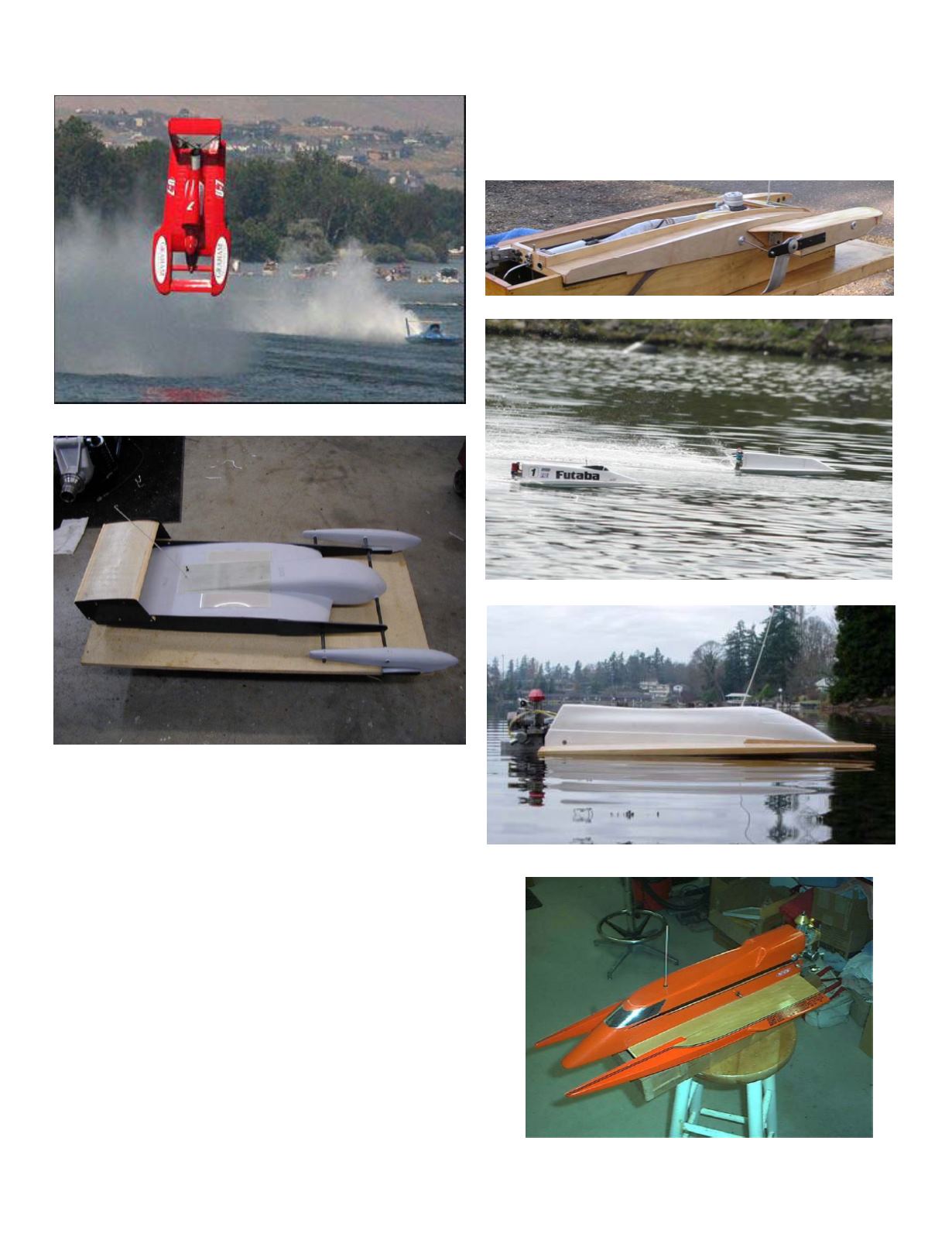
Outrigger hydros are designed to reduce the wing size as much
as possible. Any extra lift can make the stability issue worse at
their speeds. There is little air lift on the center section, so blow
overs usually don’t happen.
Tunnel hulls and cats use a different principle to balance the
wing. Tunnels have planing surfaces at or behind the extreme aft
edge of the wing. Upward pressure on the planing surfaces
balances the lift on the wing. As the angle of attack increases, the
lift on the planing surfaces increases and moves aft slightly. The
lift on the wing also increases but moves forward as we showed
above. This balance is only good over a fixed speed range. Fast
tunnels flatten out at speed, lowering the wing’s lift. In general,
tunnels have great drag reduction potential from their wing, but are
less stable, especially in rough water.
We can gain even more wing lift with air traps and end plates
that keep the air flowing along the wing. Air traps have the
strongest effect since the highest lifting pressure is under the wing.
Their length helps control where this lift is concentrated. The air
traps on the center wing on scale and sport hydros usually don’t
extend to the transom. Tunnel hulls’ sponsons are effective air traps
longer than the wing.
End plates to channel the flow over the top of the wing can
also be used. They aren’t as effective because the lifting force is
much lower there. They usually only extend a little past the wing’s
leading edge where the pressure over the wing is the lowest.
PROPWASH
April 2017
Graham Trucking blow over
Mike Bontoft’s 1/4 scale electric model with large rear wing
Air trap on Mark Anderson’s sport hydro
Sponson air traps in action on tunnel hulls
End plates at the front of the wing on a Jerry Dunlap tunnel
Rod Geraghty’s innovative tunnel
17


